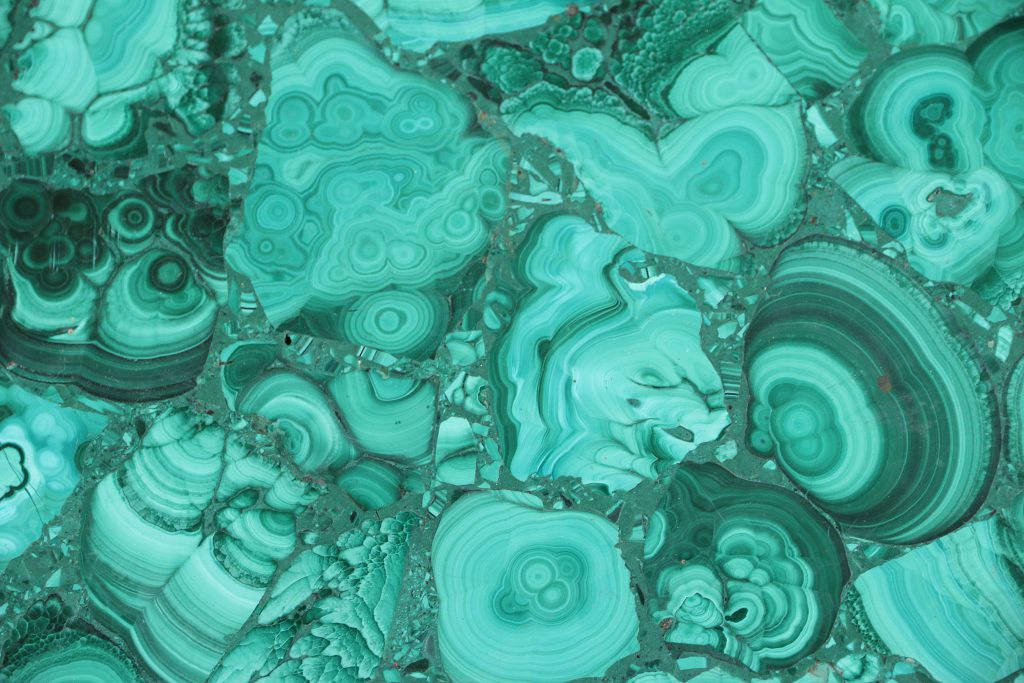
What is Malachite?
Malachite is a green copper carbonate hydroxide mineral with a chemical composition of Cu2(CO3)(OH)2. It was one of the first ores used to produce copper metal. It is of minor importance today as an ore of copper because it is usually found in small quantities and can be sold for higher prices for other types of use.
Malachite has been used as a gemstone and sculptural material for thousands of years and is still popular today. Today it is most often cut into cabochons or beads for jewelry use.
Malachite has a green color that does not fade over time or when exposed to light. Those properties, along with its ability to be easily ground to a powder, made malachite a preferred pigment and coloring agent for thousands of years.
Where Does Malachite Form?
Malachite is a mineral that forms at shallow depths within the Earth, in the oxidizing zone above copper deposits. It precipitates from descending solutions in fractures, caverns, cavities, and the intergranular spaces of porous rock. It often forms within limestone where a subsurface chemical environment favorable for the formation of carbonate minerals can occur. Associated minerals include azurite, bornite, calcite, chalcopyrite, copper, cuprite, and a variety of iron oxides.
Some of the first malachite deposits to be exploited were located in Egypt and Israel. Over 4000 years ago, they were mined and used to produce copper. Material from these deposits was also used to produce gemstones, sculptures, and pigments. Several large deposits in the Ural Mountains of Russia were aggressively mined, and they supplied abundant gem and sculptural material in the 1800s. Very little is produced from these deposits today. Much of the malachite entering the lapidary market today is from deposits in the Democratic Republic of the Congo. Smaller amounts are produced in Australia, France, and Arizona.

What is Lapiz Lazuli?
Lapis lazuli, also known simply as “lapis,” is a blue metamorphic rock that has been used by people as a gemstone, sculpting material, and ornamental material for thousands of years.
Unlike most other gem materials, lapis lazuli is not a mineral. Instead, it is a rock composed of multiple minerals. The blue color of lapis lazuli is mainly derived from the presence of lazurite, a blue silicate mineral of the sodalite group with a chemical composition of (Na,Ca)8(AlSiO4)6(S,Cl,SO4,OH)2.
Geologic Occurrence of Lapis Lazuli
Lapis lazuli forms near igneous intrusions where limestone or marble has been altered by contact metamorphism or hydrothermal metamorphism. In these rocks, lazurite replaces portions of the host rock and often preferentially develops within certain bands or layers.
Afghanistan is the world’s leading source of lapis lazuli. Some parts of the country have been actively mined for thousands of years. Other countries that produce notable amounts of lapis lazuli include Chile, Russia, Canada, Argentina, and Pakistan. In the United States small amounts of lapis lazuli have been produced in California, Colorado, and Arizona.
This information is from: Geology.com
